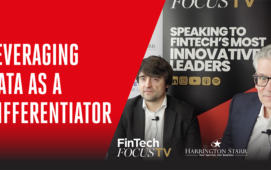By: David Murray, Marketing and Chief Business Development Officer, Corvil
Today’s fixed income markets are in transition, with changing roles of participants, an evolving regulatory climate, increased market fragmentation, accelerating electronification, a shift from active to passive investing, and macroeconomic factors all exerting influence.
Unlike many other markets, fixed income markets are neither centralised and consolidated, nor fully decentralised and networked whereby a distributed ledger provides all participants the same information at the same time. Instead, fixed income markets fall somewhere in the middle – they are networked, but information and liquidity resides in various distributed pools. In fact, at the beginning of last year, there were 128 bond trading platforms.
The shift to electronic trading in fixed income markets has accelerated, driven by the regulatory climate and the need for transaction cost efficiencies across participants in an increasingly fragmented and competitive market. According to Greenwich Associates, approximately 69% of the roughly $487 billion in daily treasury market turnover is now handled electronically.
Across multiple fixed income asset classes, this shift has led to automating many of the human and physical elements of the trading process and shifted higher level decision-making to algorithms. Recently, both Credit Suisse and Goldman announced workforce changes and increased investment in electronic trading and automation.
These factors have led to a proliferation of data and the rise of systematic investing. While most participants would agree that more data leads to better decisions, lower transaction costs and lower barriers to entry, it also drives the need for new skills, strategies and organisational structures.
The question to pose to market participants is how can trading desks be restructured on the back of this increased electronification? At the heart of the matter is intelligence and insight. In today’s competitive trading landscape, firms that have the best information and process and react fastest have the advantage. Technology plays a key role in federating these fragmented markets.
Participants face challenges in effectively and efficiently executing the required multi-dimensional analyses required to action this data for better execution, understanding of client intent, risk management and greater access to liquidity. In this period of change, with rapid and constant technology innovation, Corvil believes the smart application of technology is intrinsic to building and winning fixed income business. The industry must:
- Obtain and hone new skills: The triumvirate of market structure subject knowledge, data science, and data analytics technology skills is critical to compete and optimise trading in a climate of increasing systematic investment.
- Embrace external support: Now is the time for firms to partner to acquire the necessary talent and intelligence that accelerate progress. With new platforms, third-party vendors, data science offerings, etc., firms must leverage fintech offerings versus trying to build internally and suffering the associated time to market delay.
- Not just High Tech, ‘mind tech’: AI and machine learning are critical to analysing the volumes of data and enabling effective systematic investment, client management, and risk. While these technologies will alter key roles, they are most effective and deliver efficiencies if used in conjunction with human intelligence. This liberates humans to focus less on administrative functions and more on strategies and client management.
- Benchmarking: Fragmentation and silos abound, making it nearly impossible for firms to understand the big picture. Firms need to monitor and measure whether they are keeping pace, in which segments, during which conditions and in which products. The industry needs benchmarks.
- Transform: Challenge conventional thinking. Create liquidity desks, redefine whole desks, transform business models and organisational structures to align these critical skills and new approaches.
Systematic investment has led to more liquid, efficient markets. A by-product of this automation is a shift from human risk to operational risk, requiring better insight and oversight of systems transacting.
Illuminating the darkness is always the greatest protection and competitive edge in a changing, fast-moving market. Analytics play a key role in transparency and insight across the order and transaction lifecycle can enable firms to improve execution quality and reduce risk and losses. Normalised comparison and benchmarking of electronic trading performance across peers would go a long way to calibrating where firms are relative to the market and enable informed investment decisions.
As a leader in transaction analytics for financial markets firms, Corvil recognises the challenges of not only obtaining the right data, but also making sense of the data. The company’s precision capture, analysis and correlation of transaction lifecycle data with technology performance and trade outcomes provides the critical insight for optimising electronic trading activities and performance with counterparties.
Subscribe to our newsletter




